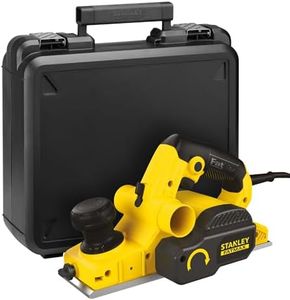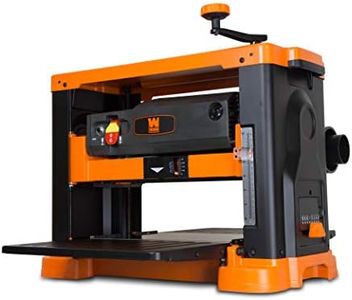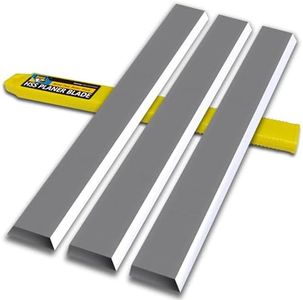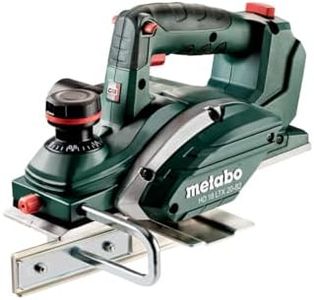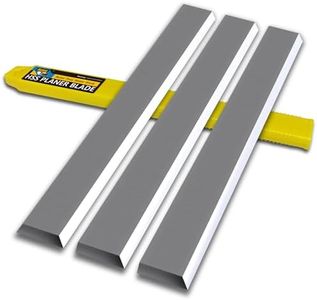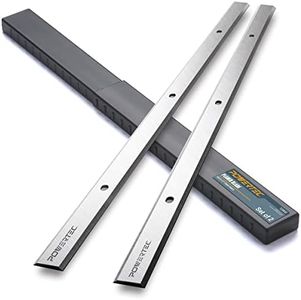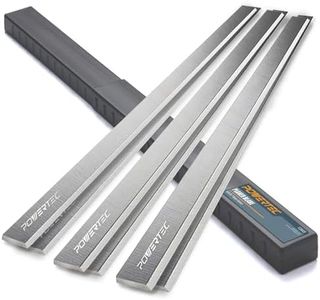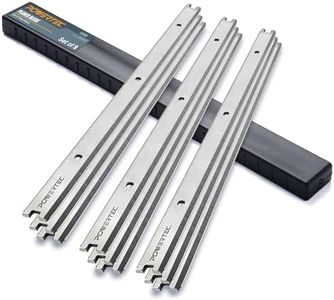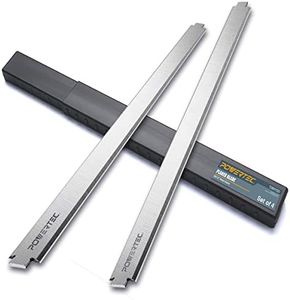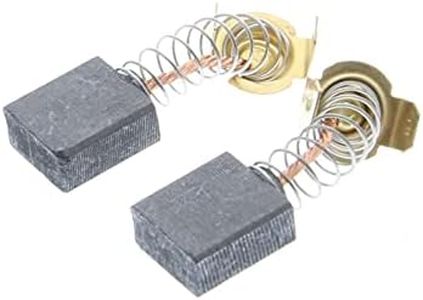We Use CookiesWe use cookies to enhance the security, performance,
functionality and for analytical and promotional activities. By continuing to browse this site you
are agreeing to our privacy policy
10 Best Thickness Planers
From leading brands and best sellers available on the web.Buying Guide for the Best Thickness Planers
Choosing the right thickness planer can make woodworking projects smoother, more precise, and a lot more enjoyable. A thickness planer is used to trim boards down to a uniform thickness and ensure that surfaces are flat and smooth, which is essential for joining pieces or creating finely finished woodwork. When picking the best thickness planer for your needs, it’s important to think about the kinds of wood you’ll be working with, how often you’ll use the tool, and the available space in your workshop. Understanding key features will help you make a smart choice that ensures both safety and efficiency.Cutting Width (Maximum Width Capacity)This spec tells you the maximum width of the wood piece the planer can handle in one pass. It's important because if you often work with wide boards, you'll need a planer that can accommodate them. Cutting width typically ranges from about 12 inches for compact models up to 20 inches or more for professional-grade tools. For hobby and small workshop use, a 12-13 inch width is suitable, while larger capacities are best if you regularly plane wide lumber or want greater flexibility.
Maximum Depth of CutThis value refers to how much material can be removed in one pass. It's important for time-saving, but taking off too much at once can strain the machine and lead to a rough finish. Depth of cut usually ranges from around 1/16 inch to 1/8 inch. If you mostly do fine work or are concerned about smooth finishes, a smaller cut per pass is fine. If you want faster work or often need to trim down rough lumber, look for planers that offer a deeper cut, but always consider balancing speed with finish quality.
Feed RateFeed rate measures how quickly the board passes through the planer. A higher feed rate gets jobs done faster, but may lead to a coarser finish, while a slower feed gives improvement in finish smoothness, especially in delicate or figured woods. Most planers are in the range of 20-25 feet per minute, sometimes with multiple speed settings. If you do detailed or high-quality finishing work, look for a planer with adjustable speed controls. If speed is more important for you, a higher feed rate may be suitable.
Motor PowerMeasured in amps or horsepower, motor power shows how strong the planer is and how easily it can handle harder woods or larger cuts. More power lets you work with tough hardwoods and full-width boards without the machine stalling. For light, occasional work, lower-power motors around 10-15 amps are usually enough. If you frequently work with hardwoods or large volumes, a higher-power motor will give you better results and durability.
Number and Type of BladesThe number and type of cutting blades affect smoothness and speed. Planers typically have two or three blades; more blades generally mean a finer, smoother finish. Blades can be straight or spiral/helical—with spiral blades producing quieter operation and smoother results, especially on difficult grain. Choose based on how important a smooth finish is, and whether you often work with tricky woods. If maintenance is a concern, check how easy it is to replace or resharpen blades.
Dust Collection CompatibilityPlaning creates a lot of wood shavings and dust. A planer with good dust collection features will help keep your workspace cleaner and protect your lungs. Most planers offer a port to connect to a vacuum or dust collector—sizes and effectiveness may vary. If you work indoors or value easy cleanup, look for models with efficient dust management.
Portability and SizePlaners come in benchtop (portable) and stationary (large, permanent) forms. The size and weight matter if you plan on moving the planer or have limited space. Benchtop planers are lighter and easier to move, making them good for small workshops or job sites. Stationary planers are heavy and robust, perfect if you have a fixed workshop and work on large projects regularly.
